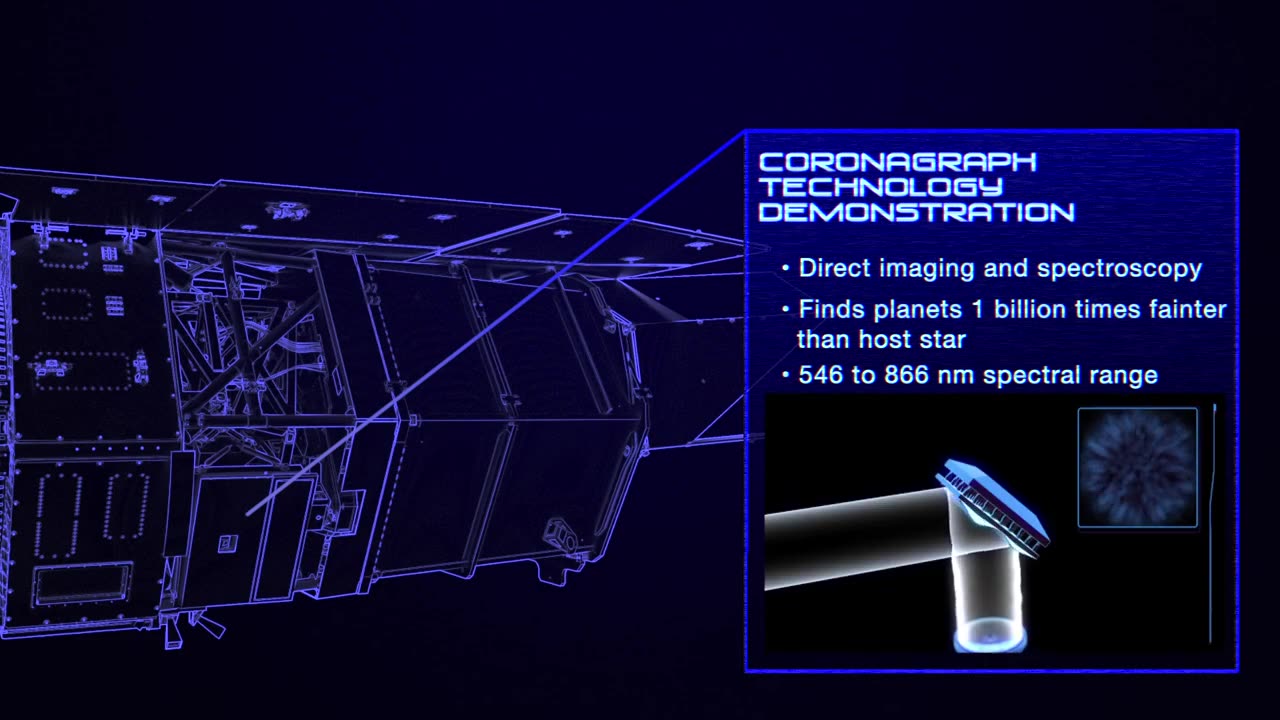Premium Only Content

Experience the Nancy Grace Roman Space Telescope with NASA
The NASA Nancy Grace Roman Space Telescope project, set to launch no later than May 2027, will contribute to the understanding of some of the universe's greatest mysteries. The most comprehensive image of the universe ever seen with the same depth and precision as the Hubble Space Telescope will be provided by the cutting-edge telescope on the Roman spacecraft, which will play a vital part in this. The critical design review for the Nancy Grace Roman Space Telescope was successful, indicating that all design and developmental engineering work is now finished.A high-precision survey mission called the Roman Space Telescope will improve our knowledge of basic physics. Roman will detect infrared light, which is invisible to human vision, like other space observatories like Spitzer and the James Webb Space Telescope. Infrared radiation is absorbed by Earth's atmosphere, which makes it difficult for ground-based observatories to operate. Roman has the benefit of flying above the atmosphere in space.The primary mirror, which has a diameter of 2.4 metres, will be used by the Roman Space Telescope to gather and concentrate light. Although it is the same size as the main mirror of the Hubble Space Telescope, it weighs only one-fourth as much, demonstrating an amazing advancement in telescope technology. The mirror collects light, which it then transmits to two scientific apparatuses. Astronomers will be able to map the presence of mysterious dark matter, which is only known through its gravitational effects on regular matter, thanks to the spacecraft's enormous camera, the Wide Field Instrument (WFI). The WFI will aid researchers in their study of the similarly enigmatic "dark energy," which is responsible for the universe's accelerated expansion. Whatever it is, dark energy might hold the secret to deciphering the universe's future.The WFI's ability to detect both smaller planets and farther-off planets than any previous survey will be used to study our own galaxy and learn more about the planets that orbit other stars (planets orbiting stars other than the Sun are referred to as "exoplanets"). The results of this survey will reveal whether our solar system is relatively common, exceptional, or unique in the galaxy. The WFI will be able to conduct extensive surveys that would take Hubble hundreds of years to complete while maintaining the same resolution as Hubble and having a field of view that is 100 times larger. By obstructing the light from their home stars, Roman's Coronagraph Instrument will show off a method for directly imaging exoplanets. Roman's cutting-edge methods will increase our catalogue of exoplanets and allow us to understand more about them because astronomers have only directly observed a small portion of them thus far. Results from the Coronagraph will provide us the first chance to observe and characterise exoplanets that are three to ten times further from the Sun than Earth, or roughly halfway between Jupiter and Saturn in our solar system, than Earth. We can find habitable planets by researching the exoplanets' physical characteristics that are closest to Earth.
The NASA Nancy Grace Roman Space Telescope project, set to launch no later than May 2027, will contribute to the understanding of some of the universe's greatest mysteries. The most comprehensive image of the universe ever seen with the same depth and precision as the Hubble Space Telescope will be provided by the cutting-edge telescope on the Roman spacecraft, which will play a vital part in this. The critical design review for the Nancy Grace Roman Space Telescope was successful, indicating that all design and developmental engineering work is now finished.A high-precision survey mission called the Roman Space Telescope will improve our knowledge of basic physics. Roman will detect infrared light, which is invisible to human vision, like other space observatories like Spitzer and the James Webb Space Telescope. Infrared radiation is absorbed by Earth's atmosphere, which makes it difficult for ground-based observatories to operate. Roman has the benefit of flying above the atmosphere in space.The primary mirror, which has a diameter of 2.4 metres, will be used by the Roman Space Telescope to gather and concentrate light. Although it is the same size as the main mirror of the Hubble Space Telescope, it weighs only one-fourth as much, demonstrating an amazing advancement in telescope technology. The mirror collects light, which it then transmits to two scientific apparatuses. Astronomers will be able to map the presence of mysterious dark matter, which is only known through its gravitational effects on regular matter, thanks to the spacecraft's enormous camera, the Wide Field Instrument (WFI). The WFI will aid researchers in their study of the similarly enigmatic "dark energy," which is responsible for the universe's accelerated expansion. Whatever it is, dark energy might hold the secret to deciphering the universe's future.The WFI's ability to detect both smaller planets and farther-off planets than any previous survey will be used to study our own galaxy and learn more about the planets that orbit other stars (planets orbiting stars other than the Sun are referred to as "exoplanets"). The results of this survey will reveal whether our solar system is relatively common, exceptional, or unique in the galaxy. The WFI will be able to conduct extensive surveys that would take Hubble hundreds of years to complete while maintaining the same resolution as Hubble and having a field of view that is 100 times larger. By obstructing the light from their home stars, Roman's Coronagraph Instrument will show off a method for directly imaging exoplanets. Roman's cutting-edge methods will increase our catalogue of exoplanets and allow us to understand more about them because astronomers have only directly observed a small portion of them thus far. Results from the Coronagraph will provide us the first chance to observe and characterise exoplanets that are three to ten times further from the Sun than Earth, or roughly halfway between Jupiter and Saturn in our solar system, than Earth. We can find habitable planets by researching the exoplanets' physical characteristics that are closest to Earth.
-
 LIVE
LIVE
Viss
2 hours ago🔴LIVE - How To Winner Winner Chicken Dinner! - PUBG
149 watching -
 1:00:41
1:00:41
Timcast
3 hours agoTrump MOBILIZING National Guard In NATIONWIDE Crackdown
122K128 -
 1:06:02
1:06:02
Sean Unpaved
2 hours agoQuarterbacks, Coaches, & Contracts: Sanders' Draft Drama, Meyer vs. Harbaugh, & McLaurin's Big Deal
14.9K -
 2:11:45
2:11:45
Steven Crowder
5 hours agoDonald Trump Vs American Crime: Chicago is Next & Libs Are Freaking Out
299K257 -
 41:08
41:08
Grant Stinchfield
1 hour ago $1.49 earnedDemocrats Try to Turn California Into Predator Playground with Proposed "Child Predator Dream Bill"
16.7K2 -
 1:21:06
1:21:06
Rebel News
2 hours agoCdn troops in Ukraine? Poilievre backs self-defence, Hamas thugs cancel Ottawa Pride | Rebel Roundup
18.3K18 -
 24:58
24:58
Neil McCoy-Ward
2 hours ago⚠️ OUTRAGE! What They Just Announced For YOUR HOME!!! 🚨
18.4K11 -
 LIVE
LIVE
IrishBreakdown
4 hours agoNotre Dame and Miami Set To Reignite Intense Rivalry
313 watching -
 1:57:07
1:57:07
The Charlie Kirk Show
2 hours agoChicago Next! + The Blue Slip Problem | Sen. Tuberville, Alex Clark | 8.25.2025
54.3K14 -
 1:20:52
1:20:52
Benny Johnson
4 hours ago🚨Trump LIVE Now: Signs Executive Order ENDING Cashless Bail | Dem Cities PANIC, Which City NEXT?...
68.1K51